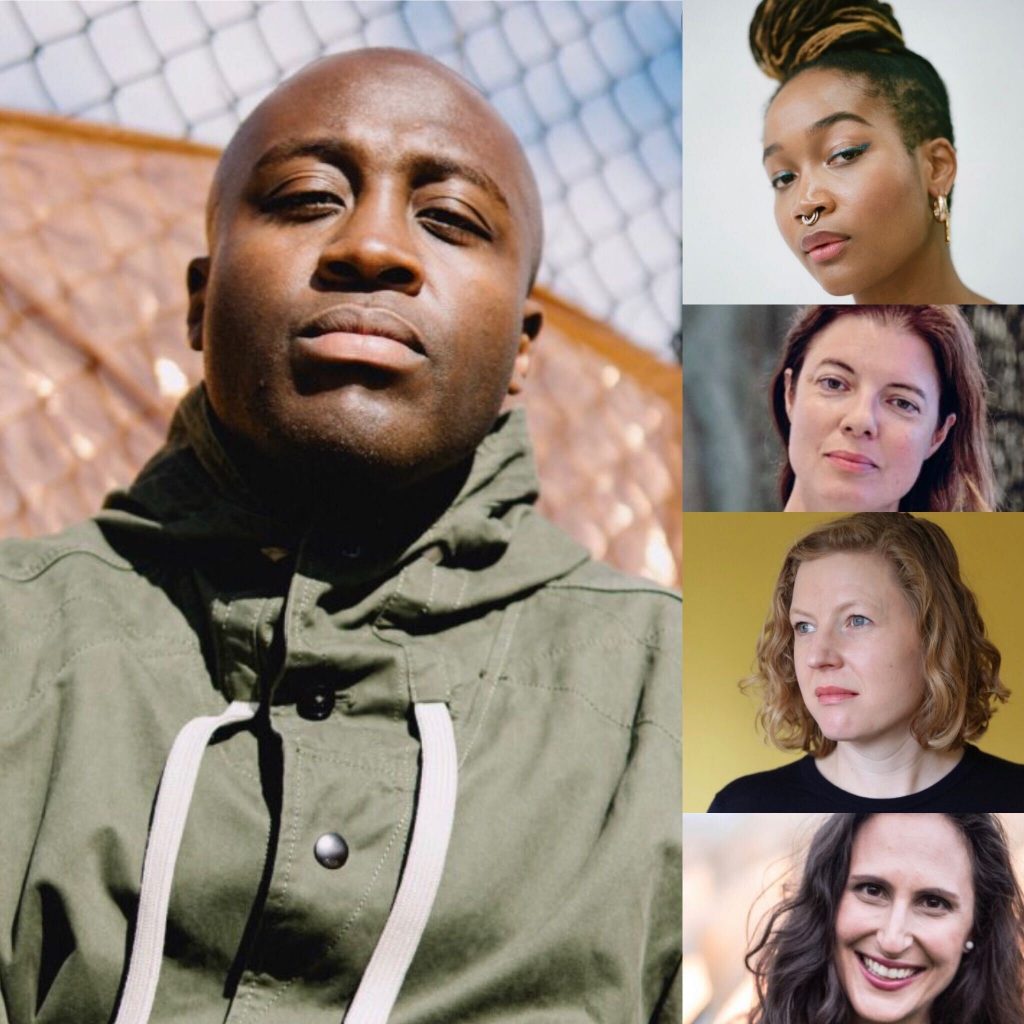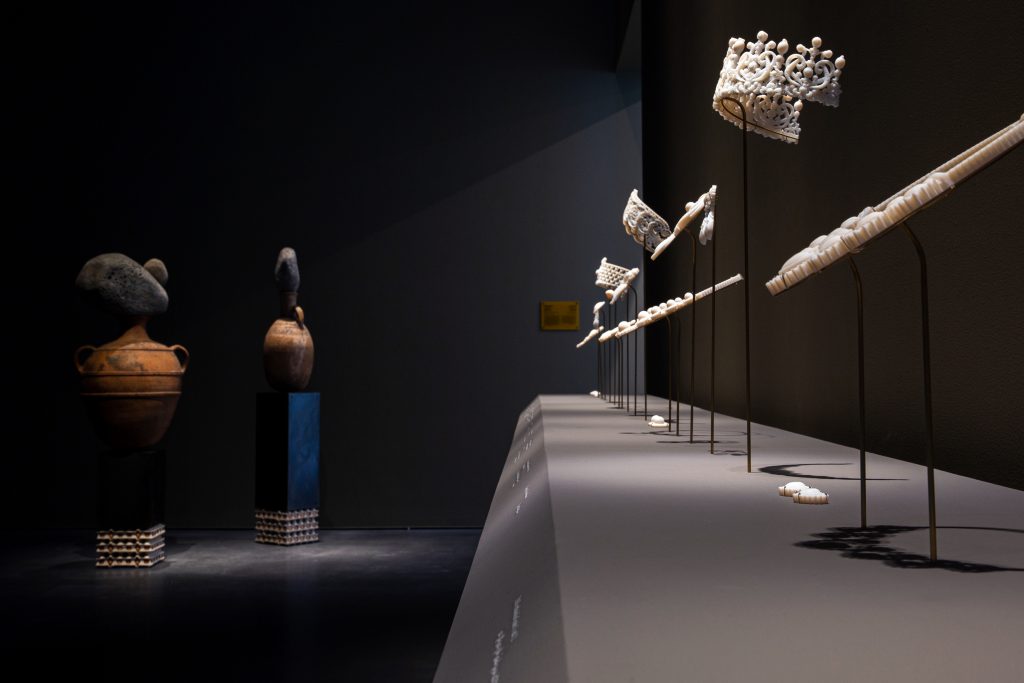People
Meet the New Innovators: 5 Community Builders Who Are Redistributing Power in the Art World
These five individuals have created movements that are reshaping the landscape for the better.

These five individuals have created movements that are reshaping the landscape for the better.

by
Artnet News

A version of this article first appeared in the fall 2020 Artnet Intelligence Report, which you can download for free here.
By uniting disparate stakeholders in various art scenes around new priorities, these changemakers have created movements that are reshaping the landscape for the better. Meet them below and see the complete list of the New Innovators here, our list of entrepreneurs here, tastemakers here, and institutional change agents here. Check back for more in-depth profiles in the coming days.
Kimberly Drew first gained widespread attention for her Tumblr account Black Contemporary Art, which she created while in college to shine a spotlight on Black creators in a period when few online art platforms were amplifying their work. She went on to manage social media at the Metropolitan Museum of Art for three years—but her career as a tastemaker and advocate really began to take off in 2018, when she left the institution to work independently. Now, Drew is a leading voice in the movement to examine the nexus of art and activism, which she wrote about in her recently released children’s book, This Is What I Know About Art.
“What I want people to understand is that all the things I’ve accomplished in my career are the results of what happens when opportunity meets preparedness,” Drew says. “I hope, as we move forward, that we really do give more opportunities to a more diverse set of people. I’m certainly not the smartest, most quick-witted, or hardest-working person out there, and there are so many interns and young people who simply haven’t had the same chances as me. Imagine if they did.”
Later this year, Drew and her coeditor, Jenna Wortham, will release Black Futures, a compendium of essays, artworks, recipes, poetry, and more by artists, writers, and activists that collectively examines “what it means to be Black and alive” in 2020.
–Noor Brara
Since being appointed director of Art Jameel, in 2016, Antonia Carver has transformed the Emirati and Saudi cultural organization into one of the region’s powerhouses. Her vision, honed during her six years as the director of Art Dubai, has enabled the Jameel Arts Centre to change Dubai’s arts landscape through exhibitions featuring independent voices on the Middle East’s multilayered past and present. She is poised to do the same for Saudi Arabia when Art Jameel opens its second arts center, in Jeddah, in 2021.

Pio Abad and Frances Wadsworth Jones, The Collection of Jane Ryan & William Saunders (2019) at Jameel Arts Centre.
At the heart of Carver’s mission is making contemporary art more inclusive. When lockdown hit the Middle East, Art Jameel was one of the first organizations to start a program (the Art Jameel Research and Practice Platform) to support creatives across the region. Such borderless thinking drives her hope that soon “the art world will finally fully embrace the majority world, rather than just the northern hemisphere, on real terms”—meaning artists everywhere will cease to be viewed as “walking biographies representative of certain geographies.” Art Jameel will push toward that goal as long as she leads it.
–Rebecca Anne Proctor
As an independent curator, Larry Ossei-Mensah has spent years making connections that help promote artists of color. This mission is central to Artnoir, the global collective he cofounded in 2013.
Originating as a series of casual meetups among a small number of creative professionals, it now encompasses a much larger group of participants dedicated to “celebrating our cultural competency, our intelligence, and our aesthetic prowess,” he says. The programming has also evolved to include regular Black-art-centered networking events, such as artist talks and symposia, and cultural events produced with the likes of For Freedoms and Open House New York.
Earlier this year, Artnoir organized its first benefit auction, to fund a microgrant initiative, the Jar of Love Fund, designed to offer relief to creatives of color. Looking forward, Ossei-Mensah is exploring how best to establish a residency for Black and brown artists. Having the Artnoir stamp means the residency will be founded, as the organization itself was, on the idea that one’s art network can double as one’s art family.
–Melissa Smith
Artists are increasingly incorporating performance into their work, notes curator Rose Lejeune, but “the market only supports painting.” That’s why she launched Performance Exchange, a program to encourage individuals and institutions to collect performance art and its ephemera. In an event that was originally scheduled for this summer but has been pushed back due to the shutdown, more than a dozen top London galleries will host performances, each accompanied by a digital-acquisition document offering details on how the work can be bought and sold. While early practitioners of the medium were deliberately anticommercial, Lejeune notes that “the economic situation in which artists work has changed.” That’s why making performance art more of a sell to both private buyers and museums is vital.
–Melanie Gerlis
Melissa Cowley Wolf believes the cultural sector is on a collision course with a crisis it has not fully grappled with yet. Since we are in the midst of what is likely the greatest intergenerational wealth transfer in history, the arts are “going to get left behind,” she says, unless the sector changes the way it is seen by the next generation. Through her consulting firm, MCW Projects LLC, Cowley Wolf—who spent more than 10 years in development at museums before founding her own shop—is working to help arts organizations redesign their philanthropic strategies to better connect with millennials and Gen Zers, who are more concerned with equity and social justice than their parents.
Meanwhile, as director of the Arts Funders Forum, she conducts research about the current state of arts philanthropy in the United States. The way to address the arts’ image problem, she believes, is to foreground the fact that “we’re not this celebrity- ridden, rich sector; that we are problem solvers, entrepreneurs, innovators; we’re gritty—we’re not afraid of challenge.”
–Melissa Smith